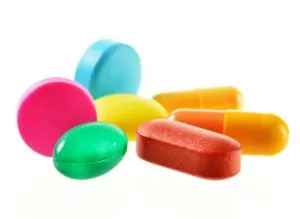
- Share on Facebook64
- Share on Pinterest
- Share on Twitter
Imagine if every American were medicated with a prescription painkiller for every hour of every day for an entire month. It would take an unheard of number of pills for this situation to play out, wouldn’t you think? Unfortunately, no. According to the CDC, that is exactly how many prescription-strength painkillers were prescribed in 2010 alone.
In fact, one in every 20 Americans reports using these powerful medications for non-medical reasons, and over 15,000 deaths occur annually thanks to these wonder drugs designed with the sole intent of keeping us pain-free.
Prescription painkillers, otherwise known as opiates, are derived from opium. They essentially bind with the receptors in our brains responsible for acknowledging pain, thereby decreasing the body’s perception of pain or discomfort and creating a sense of mild euphoria. Sounds like a great deal, right? We don’t experience pain and we actually get a euphoric high at the same time. What could be better?
Thanks to the promise of this special class of drug, doctors have seen fit to prescribe them by the boatload to every man, woman and child. In fact, from 2001 to 2010, the use of opiates has increased a whopping 49 percent.
Much of this over-prescribing is due to the fact over 100 million Americans claim to suffer from chronic pain. This statistic correlates with increased healthcare costs and decreased productivity. So in theory, doctors assume if they stop the pain, they can single-handedly decrease the ever-escalating healthcare costs and increase our nation’s productivity.
This possibly well-intended plan (or is it really just something backed by the pharmaceutical industry?) has backfired drastically and resulted in hundreds of thousands of cases of addiction and lost lives. Furthermore, according to researchers at Johns Hopkins Bloomberg School of Public Health, as a nation we are still experiencing the same amount of pain.
Prescription medications kill more people annually than motor vehicle accidents. More individuals overdose on these doctor-prescribed pills than on heroin and cocaine combined. In fact, abuse of these drugs has reached epidemic proportions.
In 1999, approximately 4,000 deaths could be attributed to prescription pain medications. Fast forward to 2008, and that number skyrockets to 15,000 deaths, and unfortunately, as the demand for these drugs continues, overworked or understaffed doctors fail to search for other means of pain treatment.
Common opiates include Vicodin, OxyContin, Oxycodone and Percocet. Addiction is a major concern, especially for those who have a history of drug abuse in their families. Addiction can lead to complete dependence and overdose, which can quickly prove fatal.
While several interest groups insist on heavier restriction of these powerful drugs, doctors all too often send patients directly to the pharmacy with prescriptions in hand.
 Even if you don’t believe you are at risk for addiction, you are best to steer clear, as anyone can easily fall victim to dependence, and these drugs come with a number of side-effects that wreak havoc on your body.
Even if you don’t believe you are at risk for addiction, you are best to steer clear, as anyone can easily fall victim to dependence, and these drugs come with a number of side-effects that wreak havoc on your body.
If your aches and pains aren’t debilitating, time and rest may be all you need to heal. However, if you feel the need for a little extra relief, skip the pain meds and try some of these natural pain relievers.
- Capsaicin or arnica topical creams for joint and muscle aches.
- Ginger, turmeric, St. John’s Wort or Devil’s Claw for inflammation.
- Magnesium or valerian root for tight, tense muscles.
Sources:
http://www.sciencedaily.com/videos/680972.htm
http://www.jhsph.edu/news/news-releases/2013/alexander-opiod-pain-use.html
http://psychcentral.com/blog/archives/2013/08/31/facts-about-prescription-opiate-abuse
http://www.nbcnews.com/id/26136767/ns/health-alternative_medicine/t/youre-pain-you-want-relief-naturally/#.UzL4MNwk_wI
http://healthyliving.msn.com/diseases/pain-management/skip-the-ibuprofen-use-these-natural-pain-relief-tactics-instead
http://www.cdc.gov/vitalsigns/painkilleroverdoses
http://www.everydayhealth.com/pain-management/herbal-remedies-for-pain.aspx
- Share on Facebook64
- Share on Pinterest
- Share on Twitter

